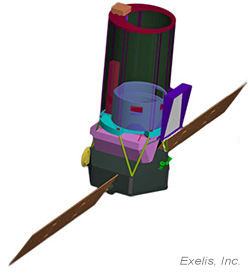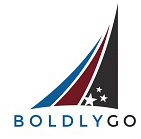ASTRO-1: A New-Generation UV-Visible Space Telescope
Jon Morse BoldlyGo Enterprises, LLC
ASTRO-1 is a 1.8-meter off-axis (unobscured) ultraviolet-visible space observatory to be located in a Lagrange point or heliocentric orbit with a wide-field panchromatic camera, medium- and high-resolution spectrograph, and high-contrast imaging coronagraph. It is intended for the post-Hubble Space Telescope era in the 2020s, enabling unique measurements of a broad range of celestial targets, while providing vital complementary capabilities to other ground- and space-based facilities such as the James Webb Space Telescope (JWST), Atacama Large Millimeter/submillimeter Array (ALMA), Wide-Field Infrared Survey Telescope-Astrophysics Focused Telescope Assets (WFIRST-AFTA), Large Synoptic Survey Telescope (LSST), Euclid, and the Transiting Exoplanet Survey Satellite (TESS). A wide variety of scientific programs can be accomplished, addressing topics across space astronomy, astrophysics, fundamental physics, and solar-system science, as well as being technologically informative to future large-aperture programs.
Being exceedingly aware of the limitations of federal resources for space science, we formed the nonprofit BoldlyGo Institute to conduct cutting-edge missions using private funding. Our goal is to augment the government-supported portfolio by “expanding the pie” of available funding. The community faces the conundrum of how to rejuvenate its suite of space-science missions in a continuously tight fiscal environment. In particular, with funding demands anticipated for new facilities that span the electromagnetic spectrum, particle astrophysics, and gravitational waves, it may not be financially possible to construct a true replacement for Hubble’s UV-visible capabilities while simultaneously developing a large aperture UVOIR observatory such as was discussed at the recent AAS meeting in Seattle.We believe a privately funded ASTRO-1 space observatory is the answer to retain and enhance many of Hubble's capabilities without diverting significant government funds away from a future large-aperture program!
Privately funding a space telescope of this scale is daunting but not impossible. The initiative needs to occupy the sweet spot of simultaneously wielding great scientific power while being technically viable and affordable. Beyond these pragmatic notions, we also believe that the lure of space exploration, technological innovation, and building on Hubble’s scientific legacy and popularity can combine to create an instant affection for ASTRO-1 as a new-generation research facility serving a broad national and international community, as well as a vessel for impactful public engagement. And, no matter what career stage you're at now, it needs you in order to succeed.
Traditional institutional partnerships and consortia, such as are common with private ground-based observatories, may play a role in the support and governance of ASTRO-1; however, using solely this model can wind up providing access only for a few wealthy institutions instead of the broad community that we’re accustomed to with Hubble and other space observatories. Therefore, in addition to our planned open guest observer program, we intend to provide a mechanism whereby individual scientists can buy in to a fraction of the observing time, so that it doesn’t take an act of a board of trustees to secure guaranteed access. The financial bar for these individual “guaranteed time” partnerships will be commensurate with a typical research grant, and participants can raise the funds any way they like, such as possibly through research grants, indirect cost return, alumni gifts, crowdfunding, or even personal financial assets.
Our next step in ASTRO-1 development is to form the ASTRO-1 Requirements Team (ART), which will be tasked with optimizing the science case and observatory design and constructing a design reference mission. We will shortly circulate a call for letters of interest from those interested in serving on the ART during the latter half of 2015 and 2016.
Please visit the BoldlyGo and ASTRO-1 websites to find out more, and send us a note this month using the Contact Us form to express your interest in and ideas for ASTRO-1. Also, follow us on Twitter, Facebook and Google+. Note that we believe that ASTRO-1 will be a terrific conduit for engaging the large community of amateur astronomers and space enthusiasts through citizen science and direct-access programs, as well as students through various participatory STEM education opportunities. Your interest, experience, and involvement are key to ASTRO-1’s success!



